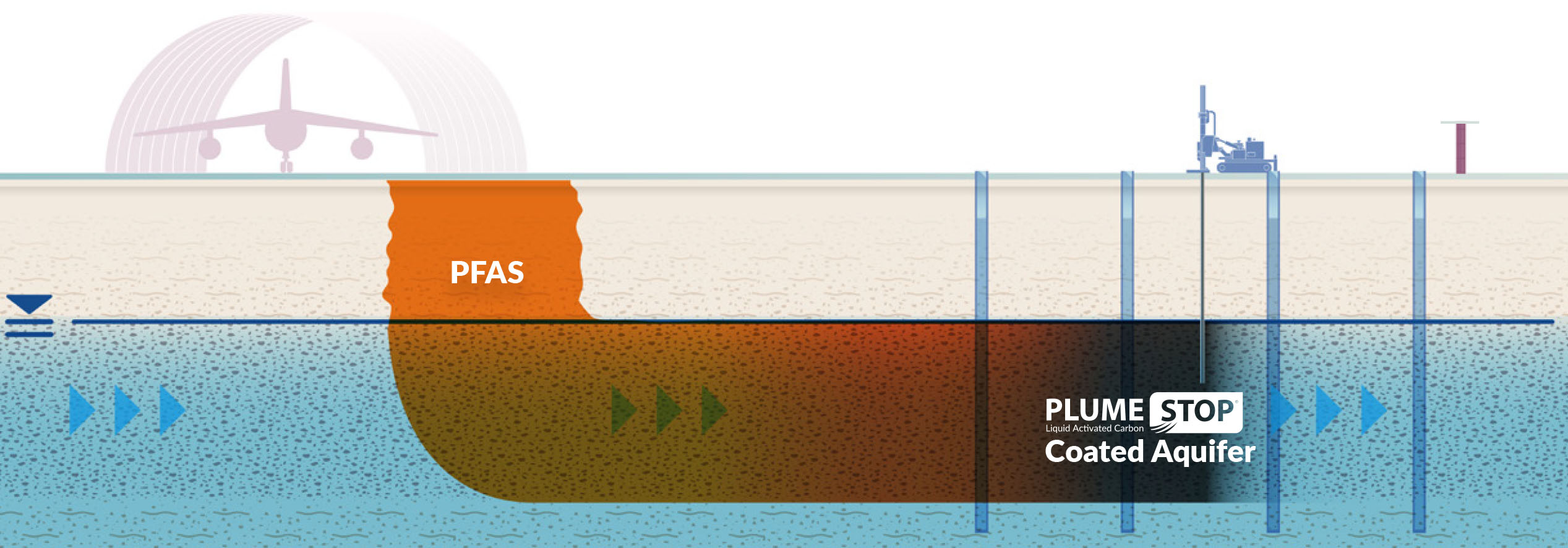Ingenious PFAS Treatment Solutions for Safer Water
The increasing occurrence of PFAS contamination in water supplies demands a critical assessment of innovative therapy options. Advanced filtering innovations and unique chemical treatments existing appealing methods for decreasing these relentless contaminants. In addition, emerging bioremediation methods supply an even more lasting method to taking on PFAS difficulties. As governing structures remain to adjust, understanding the effectiveness and scalability of these options becomes critical. What implications do these innovations hold for public health and ecological repair, and just how can stakeholders successfully execute them in varied contexts?
Summary of PFAS Contamination
PFAS contamination has actually become a substantial ecological and public health issue. Per- and polyfluoroalkyl compounds (PFAS) are a group of synthetic chemicals understood for their determination in the setting and body, leading them to be commonly described as "forever chemicals." These compounds have actually been widely used in various markets, consisting of firefighting foams, water-repellent fabrics, and food packaging, primarily due to their water- and grease-resistant residential or commercial properties.
The extensive use of PFAS has led to their discovery in soil, water supplies, and even in the blood of humans and animals. Researches have actually connected PFAS exposure to various health issues, including developing results in babies, immune system dysfunction, and numerous kinds of cancer cells. Furthermore, the environmental perseverance of these substances complicates their deterioration and removal, raising problems regarding long-term ecological influences.
Regulative bodies are increasingly implementing rigorous standards to keep track of and lower PFAS degrees in drinking water and various other environmental mediums. As recognition of PFAS contamination grows, it has actually ended up being imperative for areas and industries to look for efficient treatment options to reduce direct exposure and secure public health.
Advanced Filtration Technologies
As the urgency to resolve PFAS contamination escalates, advanced purification innovations have actually become a crucial component in the removal efforts targeted at removing these consistent chemicals from water resources. These innovations utilize sophisticated systems to effectively target and catch PFAS substances, which are notoriously immune to standard treatment techniques.
Among the most appealing approaches is making use of granular triggered carbon (GAC), which adsorbs PFAS particles due to its high area and permeable framework. This method has actually been extensively implemented in both local and commercial setups, showing considerable decreases in PFAS focus. Additionally, ion exchange resins have obtained grip, specifically developed to uniquely bind PFAS ions from water, hence facilitating their removal.
Membrane filtering modern technologies, such as reverse osmosis and nanofiltration, additionally show efficacy in PFAS removal by physically separating impurities from water - pfas management. These systems can attain high degrees of pureness, making them suitable for drinking water applications
Chemical Treatment Innovations
Many chemical therapy technologies are being discovered to effectively address PFAS contamination in water supplies. One promising strategy involves the use of sophisticated oxidation processes (AOPs), which utilize powerful oxidants such as ozone, hydrogen peroxide, or chlorine dioxide incorporated with UV light to damage down PFAS substances into her latest blog less damaging compounds. This technique has demonstrated efficiency in research laboratory setups, revealing possible for scalability in real-world applications.
Another ingenious approach is the advancement of ion-exchange resins particularly developed to target PFAS. These resins can uniquely adsorb PFAS compounds from water, permitting their elimination throughout therapy processes. Recent advancements have actually boosted the performance and capacity of these resins, making them a favorable alternative for water therapy facilities.
In addition, researchers are exploring the usage of chemical agents like persulfate and ferrous ions to enhance the destruction of PFAS in polluted water. These agents can generate chain reaction that help with the failure of consistent PFAS substances.
Emerging Bioremediation Strategies
Recent advancements in chemical therapy innovations have actually paved the means for checking out bioremediation strategies as a feasible option for resolving PFAS contamination. Bioremediation uses the all-natural metabolic procedures of microorganisms to degrade or change contaminants, making it an appealing approach for dealing with relentless impurities like PFAS.
Emerging strategies in bioremediation include using genetically crafted microbes that can specifically target and break down PFAS substances. These microbial pressures are being developed for their improved destruction capabilities, boosting the efficiency of the remediation process. Additionally, researchers are investigating the capacity of plant-assisted bioremediation, where specific plant varieties may uptake and sequester PFAS from polluted soil and water.
Another promising strategy is the application of bioaugmentation, which involves introducing helpful microorganisms into polluted environments to improve the destruction of PFAS. This approach can help with quicker removal timelines and boost total performance.

Regulative Structures and Criteria
A detailed regulative structure is essential for effectively managing PFAS contamination and ensuring public wellness defense. The increasing recognition of per- and polyfluoroalkyl substances (PFAS) as environmental toxins has actually motivated numerous government and state firms to create criteria that regulate their existence in water supplies. The U.S. Environmental Protection Agency (EPA) has established wellness advisories and is pursuing setting enforceable limitations for PFAS in drinking water.
State-level regulations vary considerably, with some states adopting stricter click here to read standards than those suggested by the EPA. These guidelines commonly include maximum impurity degrees (MCLs) for details PFAS compounds, monitoring requirements, and reporting commitments for water utilities. In addition, arising structures concentrate on the remediation of infected websites, highlighting the requirement for effective therapy modern technologies.

Final Thought
In final thought, the development and execution of ingenious PFAS treatment remedies are essential for addressing the prevalent issue of water contamination. Advanced filtering modern technologies, chemical therapies, and emerging bioremediation techniques jointly provide a diverse technique to efficiently minimize and deteriorate PFAS degrees. As regulative frameworks proceed to progress, integrating these modern technologies will be necessary to guard public health and wellness and recover the honesty of polluted water resources, eventually contributing to a cleaner and much safer environment.